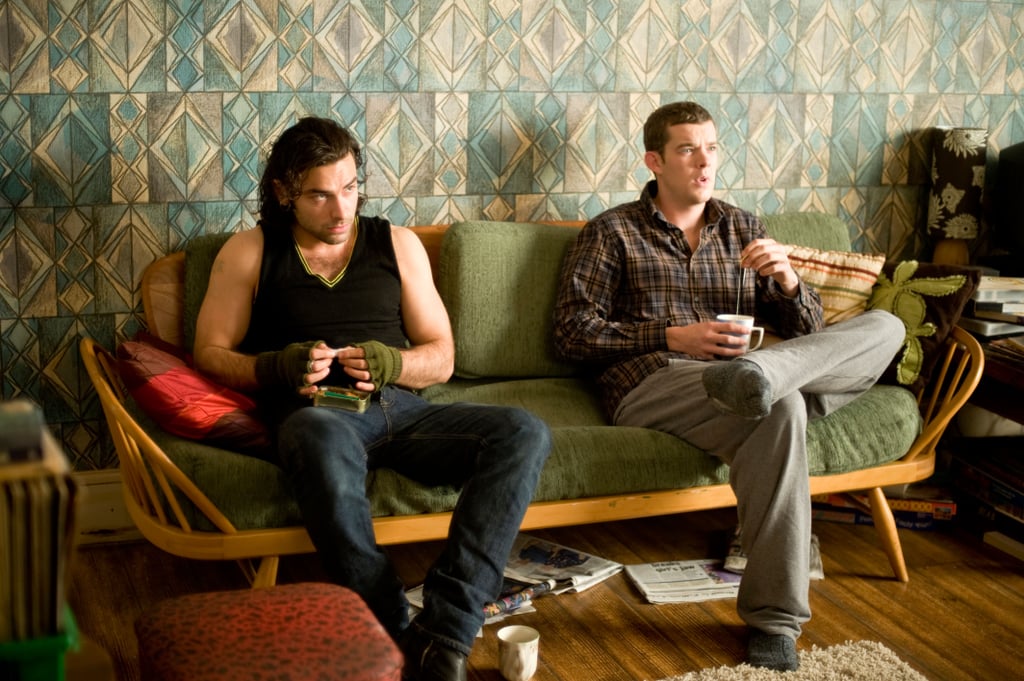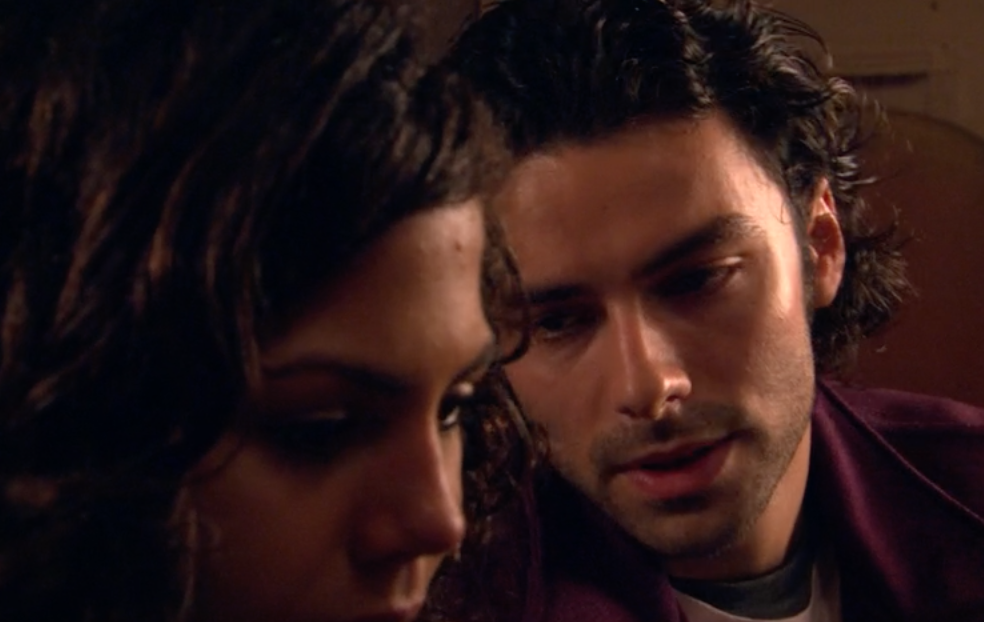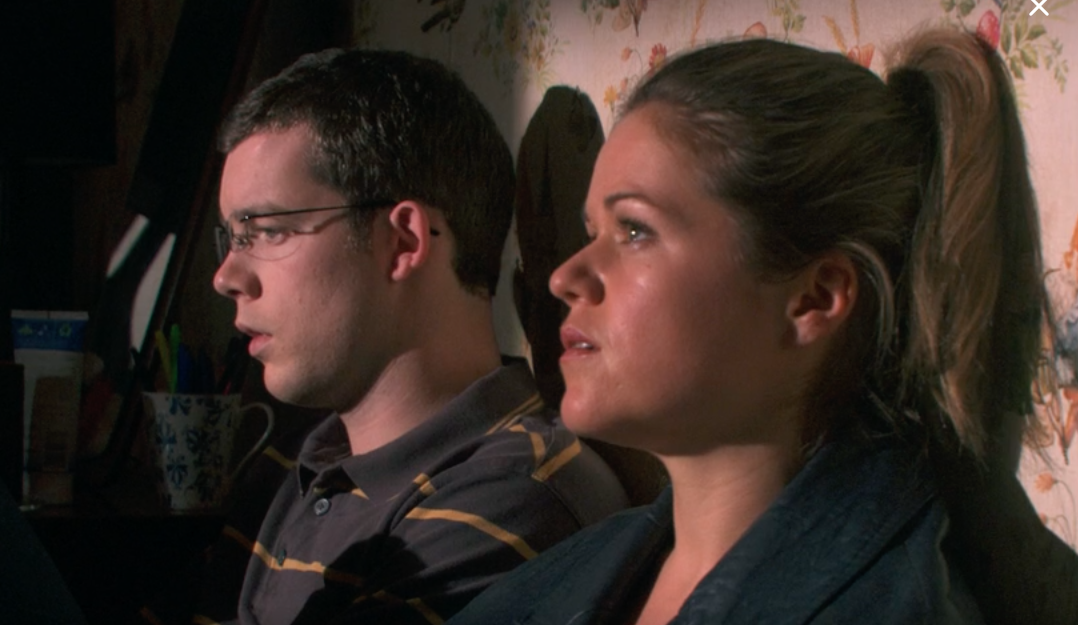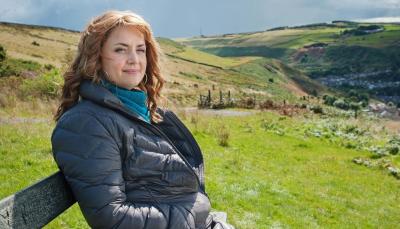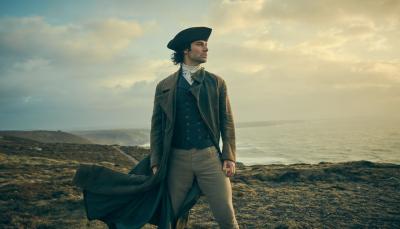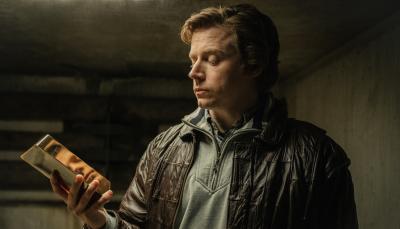Better Late Than Never: Supernatural Series 'Being Human' Still Has Bite
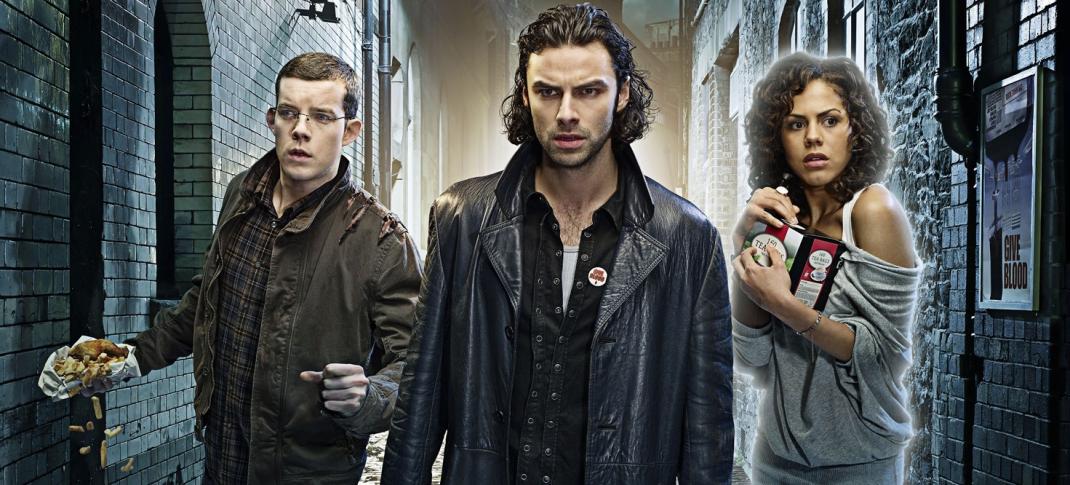
Werewolf George (Russell Tovey), vampire Mitchell (Aidan Turner), and Annie the ghost (Lenora Crichlow).
Credit: BBC / Touchpaper Television
The top-rated BBC series Being Human, originally aired from 2008 until 2013, has finally found its way to streaming, first on BritBox and now on AMC+. Created by Toby Whithouse, whose earlier work included 2001's Bridget Jones’ Diary, the creative team originally intended the series to be about three 20-somethings sharing a house. Since that didn’t sound very exciting or original, one of the team suggested a paranormal twist, and it took off from there. The series aired on BBC America early on but weren't suited for an American audience accustomed to the glossy supernaturals of True Blood or Buffy the Vampire Slayer. But it was an interesting enough concept for Whithouse to collaborate on a U.S. version, also named Being Human, which aired from 2011 until 2014 on both sides of the pond.
So here we are. Overlooked and forgotten. Unnatural and... supernatural. Watching the dance from the sidelines... What have we got left to look forward to? Us refugees? The flotsam and jetsam of death. Maybe, if we still deserve such a thing as mercy, we find each other.
Produced by BBC Wales, the first season of the U.K. version of Being Human was filmed almost exclusively in Bristol, a city of rich history, varied architecture, and funky neighborhoods, the blue-collar cousin of its posher cousin Bath a few miles to the east. It is a doggedly British production, and a lot of the fun is seeing the supernatural-horror conventions adapted to the time and place. A vampire, a ghost, and a werewolf live in a world of blue-collar workers, Victorian terrace houses, old ladies with shopping bags, NHS hospital wards, corner shops, back-street pubs, and endless cups of tea.
Frequent voiceovers from its trio of main characters express the loneliness and pathos of just trying to fit in, to find their tribe and purpose in life in a story of friendship, love, and sacrifice. The three lead actors are superb. Mitchell the Vampire is played by Aidan Turner (Poldark) with sensitivity, real menace, and great comic timing. We first see Mitchell, a rather scruffy young man in dark glasses, staring at a World War I memorial on the Bristol streets. It’s a surprisingly poignant moment; Mitchell has abandoned the vampire community, suffering from guilt and horror at his track record of bloody kills. But he succumbs to Lauren (Annabel Scholey), with whom he has sex, which leads to her death and becoming a vampire.
It’s not made clear how other than the biting business, this actually happens, but do be aware there’s frequent cross-species sex with lavish blood splatter. Vampire tradition demands that the vampire responsible for crossing over another is responsible for their introduction in the early days. But Mitchell treats Lauren as an unwelcome obligation, a reminder of his weakness and failure to change his life.
Mitchell’s flatmate is George, played by Russell Tovey (Years and Years), a mild, sweet young man who met with an accident on holiday in Scotland and is now a werewolf. As Mitchell says, George gets time off, being afflicted only on the night of the full moon, but his transformation is violent and terrifying (and also ludicrous, though you have to give the production/makeup department 10/10 for effort). Usually, George takes over an unused hospital outbuilding where he can howl and gouge the walls with his claws, but he gets into trouble when the remodeling starts, and Mitchell has to drive him to the wooded areas above the Avon Gorge. It’s risky as George also has to shed his clothes (you’ll see a lot of Tovey’s bottom), and by daylight, he will be filthy and bloodstained.
Annie, played by Lenora Crichlow (Avenue 5), is fragile and sensitive; she lived and died in the house and is just beginning to be seen by people other than George and Mitchell. Desperate for purpose and contact, she makes dozens of cups of tea (which she can’t drink) and is thrilled when she can hold an inane conversation with a young man delivering pizza. Her former fiancé Owen (Gregg Chilingarian) still owns the house and frequently visits to fix banging pipes while Annie gazes sadly at him. Mitchell and Annie love each other deeply, but the practicalities of a relationship are just too complicated, and having shared one tentative kiss, they back off.
The adventures in the first season are delightful. For example, George’s immediate problem is to find a secure place for the full moon, and he tries just once to spend the night in the house (Mitchell takes the TV outside, anticipating massive damage). Sure enough, George is asleep by morning in a vast pile of splinters that used to be their furniture. Mitchell gloomily contemplates a trip to Ikea (“...and you know how I feel about that.”) Meanwhile, the three bicker about doing the dishes, food expiration dates in the refrigerator, and so on. And then Mitchell makes a decision. They must gain their neighbors’ trust to pass entirely as humans and not just be the two strange guys in the house on the corner. So, he invites the neighbors in for a tea party.
George meets and befriends another werewolf, the charismatic Tully (Dean Lenox Kelly), who becomes his mentor, teaching him the best techniques to avoid detection at the full moon and live his best life as a sexy, macho monster. He moves into the house and becomes the annoying roommate on the sofa until he flirts too hard with Annie and scares her. Mitchell throws him out, only for Tully to reveal his true identity. But George, his confidence boosted, is attracted to Nina (Sinead Keenan), a nurse at the hospital, and after much dithering around, invites her to dinner. He’s so shy that she gives him an embarrassing lecture on erectile dysfunction, but fortunately, it’s almost full moon, and George’s fierce lovemaking wins her over.
In another episode, Annie meets up with another ghost, Saul (Alex Lanipekun), an alternative rock fan from the 1980s, and they hang out together. He falls in love with her, although since most of their dates consist of him dancing in the graveyard with headphones on and listening to the Smiths, it’s not that much fun for Annie. But one day in the house, a portal opens where he can leave this world and go ... somewhere. As are the niceties of vampire behavior, the theology is a bit vague. (On the other hand, Whithouse and his team decided to pick and choose the vampire lore that lent itself to the plot, e.g., Mitchell and Co. don’t shrivel up in the sun but favor dark glasses.)
As for Mitchell, he is pursued by Herrick, conducting a drive for new vampires, assuring Mitchell recruitment is voluntary for seriously ill patients. Mitchell meets an old flame, Josie (Claire Higgins), whom he used to date in the 1960s. (Season 2 has a flashback to their affair in that period; Turner has the worst hairstyle). When he finds she is terminally ill, he puts her in touch with Herrick. But she’s not convinced. Is the recruitment as consensual as Herrick claims? Well, yes. But you have to eat, Herrick admits coyly, and “it feels so nice.” The slogan for the campaign is “No one left behind,” and Josie thinks it sounds “all too New Labour.”
She’s right. Herrick captured a group of people, imprisoned to provide blood, and in terrible shape, sick and dying. The relationship between Herrick and Mitchell will now escalate in the best heroic tradition. However, the group is threatened when the neighbors falsely accuse Mitchell and George of child molestation, and everyone begins to think about moving on. Don’t worry, they won’t (the show has multiple seasons to go). The delight in their friendship and loyalty across supernatural beings is worth sticking around for, both for them and us.
All five seasons of the original U.K. Being Human are streaming on BritBox. The first season has just arrived on AMC+, with more seasons coming every Saturday through mid-January 2024.

